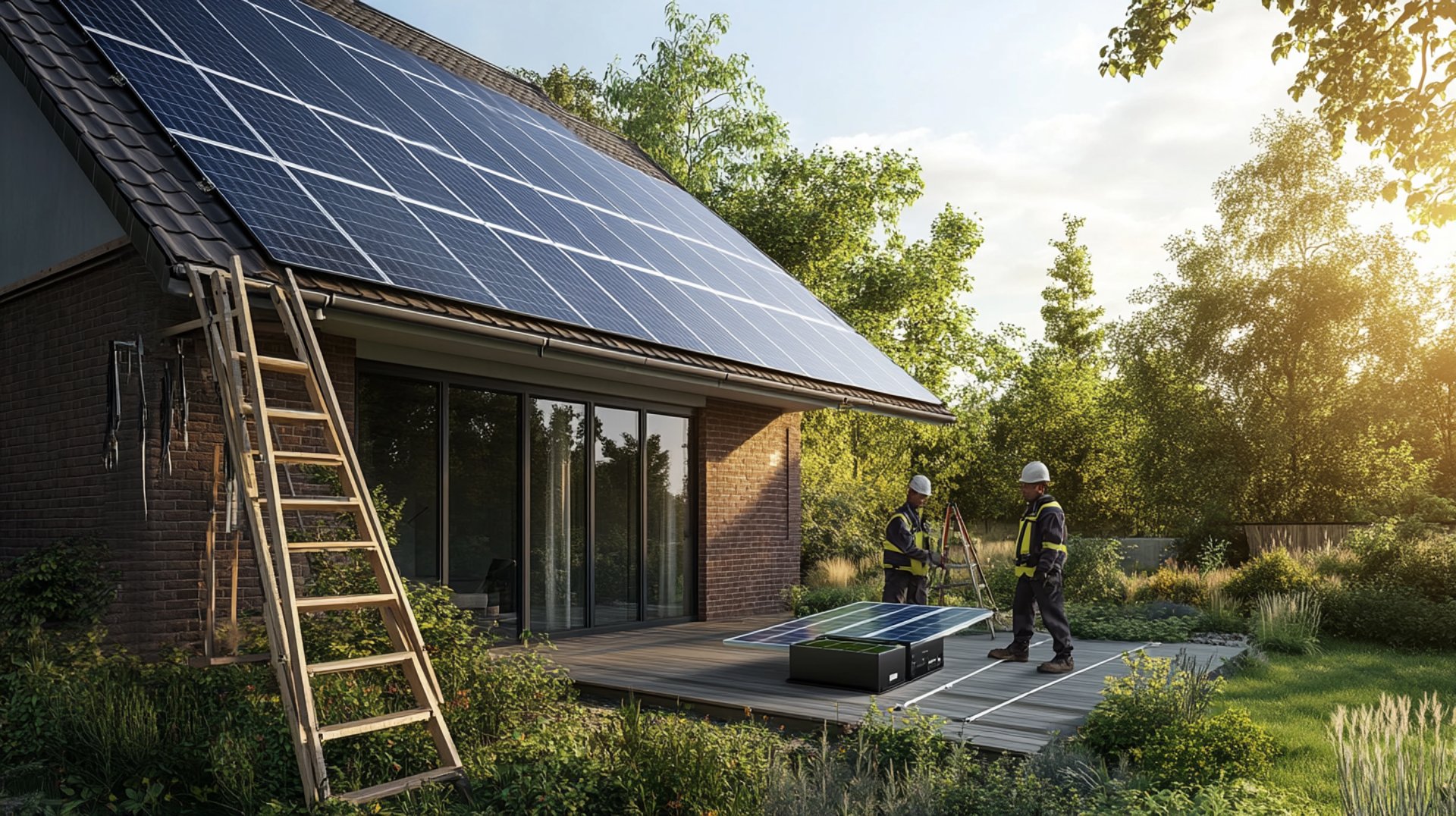
Installing Photovoltaic Panels
Thinking of installing photovoltaic panels? Our step-by-step UK guide covers the entire solar panel installation process, from the initial survey to adding a solar battery.
Connor Braddy
7/23/20254 min read


A UK Homeowner's Step by Step Guide to Solar Panel Installation
Deciding to install photovoltaic panels is a significant step towards a more sustainable and cost-effective future. A solar panel system is a powerful renewable energy source that can lower electricity bills, reduce your home's carbon footprint, and provide greater energy independence. For many homeowners, the solar panel installation process can seem daunting. This guide will demystify the entire installation process, from the initial survey to powering up your home with the sun's energy.
Step 1: Is Your Home Suitable for Solar Panels?
Before you can install panels, a professional installer must assess if your home is suitable.
Assessing Your Roof: The ideal roof for a solar installation is a large, un-shaded, south-facing roof. However, east and west-facing roofs can also be very effective. A north-facing roof is generally not recommended as it receives less direct sunlight.
Do You Need Planning Permission?: In most of the UK, residential solar panels installed on a roof are considered "permitted development" and do not require planning permission. However, it is always wise to check with your local planning office, especially if your property is a listed building or in a conservation area.
Step 2: The Consultation and Getting a Tailored Quote
Once your property has been deemed suitable, the next step is a detailed consultation. An expert will analyse your energy bills to understand how much electricity your household consumes. Based on this, they will design a solar system that meets your needs and provide a free, no-obligation, tailored quote. This will outline the estimated solar panels cost and the total cost of the installation.
Step 3: The Solar Panel Installation Process
A typical panel installation is a well-managed process that usually takes only a day or two.
Preparation and Safety: The first step on the day is to install scaffolding.
Mounting the Panels: The team will attach the mounting structure to your roof's rafters and secure the panels.
The Electrical Work: An electrician will install the solar inverter. This crucial device converts the direct current (DC) electricity generated from sunlight into alternating current (AC) electricity used by your household appliances. The system is then connected to your home's consumer unit.
Step 4: Commissioning Your System
After the installation, the system is "commissioned." This involves tests to ensure everything is working properly. The installer will then show you how to monitor your solar system's performance, so you can see exactly how much power you are generating.
"It’s not just about slapping panels on a roof. It’s about designing a whole home energy system. The real value is when you add storage, that’s when you turn your home into your own power station."


The Ultimate Upgrade: Adding Battery Storage
Your solar panel system will often generate extra energy. So, what happens to this excess energy?
Selling Electricity to the Grid: You can sell electricity back to your energy supplier through a government scheme called the Smart Export Guarantee (SEG).
The Smarter Choice: Store Energy with a Solar Battery: It is often more financially beneficial to store energy than to sell it. A solar battery allows you to store your excess energy to use during the evening peak hours, which is the most effective way to slash your energy bills. Battery storage is also key for powering high-load appliances like heat pumps.
The Volta Eco PowerPod: A Seamless Integration
The Volta Eco PowerPod is the ideal partner for your solar installation.
All-in-One System: The PowerPod is a complete, integrated system that includes both the solar battery and the solar inverter, which simplifies the installation process.
Intelligent Management: The ECOS app provides seamless monitoring of your system's performance. It automatically manages the flow of power to maximise your savings and use of clean energy.
Long-Term Reliability: The PowerPod uses safe, long-lasting LFP batteries and is backed by a 10-year warranty, ensuring your investment is protected.
A professional solar panel installation is a straightforward process. By combining it with battery storage, you can unlock the full financial and environmental benefits of this incredible renewable energy technology.
Ready to start your solar journey? Contact our team for a free, no-obligation quote.

Find out more about home solar energy below
Charged up?
Ready to learn more about our battery storage systems?
Get in touch with our experts today.


Registered office address
1501 Douglass Tower, 9 Goodluck Hope Walk, London E14 0XE
020 3297 7349
hello@voltaeco.co.uk
Company number 15724376









